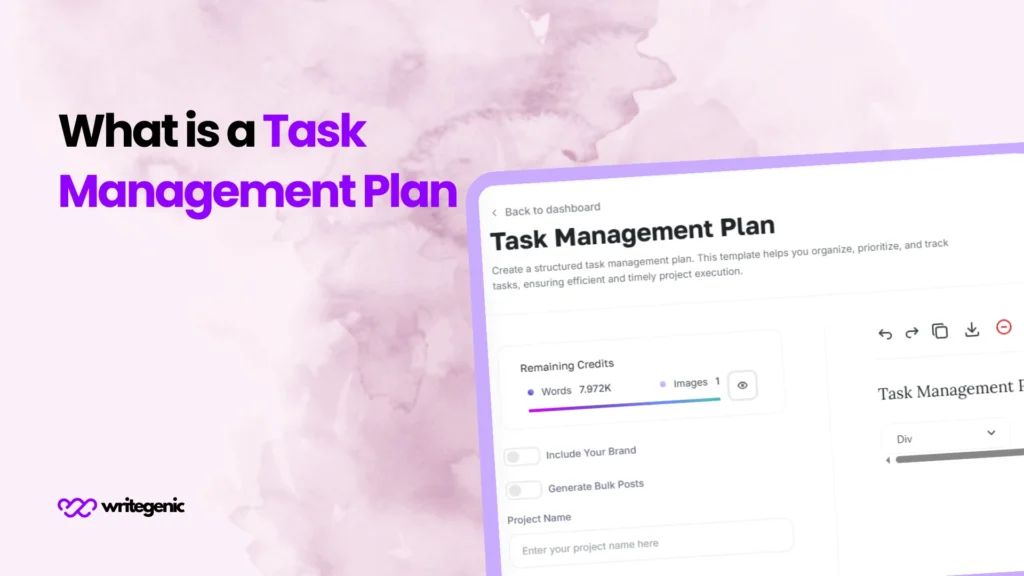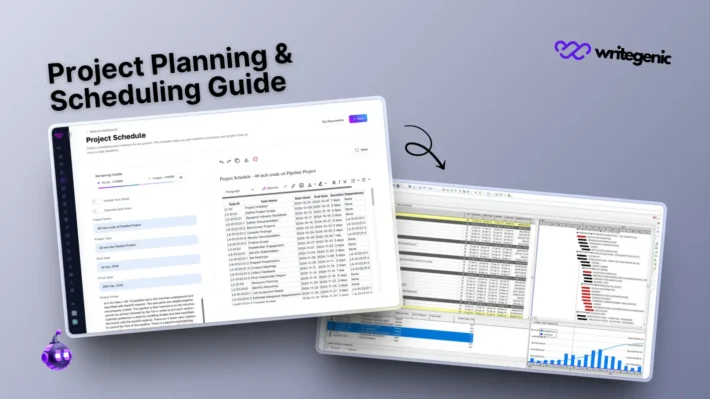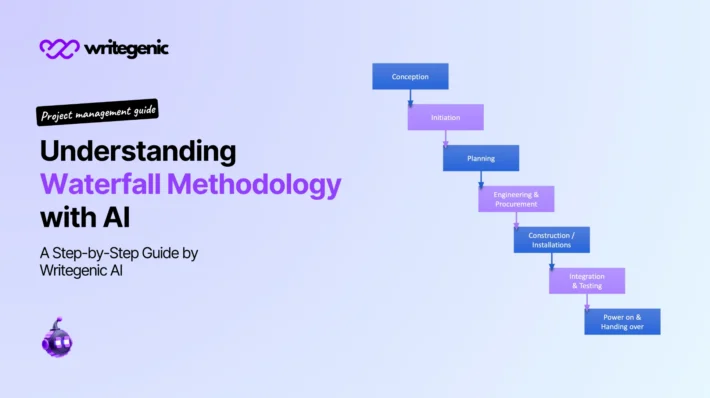What is a Task Management Plan | Process and Planning Guide

Using a task management plan allows you to both plan and handle, distribute and keep track of tasks in a project. It details the process for each activity which individual is in charge and the right time for completing those activities. This helps the team stay on track throughout the project, from the beginning to the end. If there is no task management, a project with a great plan may still fail.
It ensures all team members are focused, work on time and responsibilities are maintained. When applied with the 7 steps of project planning, it improves teamwork and makes certain that no tasks are missed. When a task management plan is organized well, it becomes easier to carry out and achieves better results.
Table of Contents
What Is a Task Management Plan
A task management plan consists of details on the way tasks are created, distributed, monitored and finished during a project. Typically, a project includes details such as tasks, roles, deadlines, related tasks, what’s needed and how progress gets measured.
The plan is essential in project planning because it ensures that each task is significant for achieving the project objectives.
Task Management Plan in Project Planning
A project plan outlines everything needed for executing the project such as the scope, timeline, type of resources, risks, different stakeholders and communication plans. The management plan for tasks is extremely important for the overall project plan.
Imagine that the whole project is the car and task management powers it all the way. As long as tasks are not managed successfully, a good project plan will not surely succeed.

What Are the Parts of a Project Plan
A complete project plan usually includes:
- Project Scope – What’s included (and excluded) in the project
- Timeline & Milestones – Key deadlines and deliverables
- Resource Allocation – Who is responsible for what
- Task Management Plan – Task scheduling, assignment, and tracking
- Communication Plan – How updates will be shared
- Risk Management – Identifying and addressing potential issues
- Budget – Cost estimation and financial planning
The main component here is the task management plan, ensuring all daily activities move toward reaching the main goals.
7 Steps of Project Planning
Following the 7 steps in project planning forms a good base for a task management plan.
1. Define Project Objectives
Clarify what objectives are set for the project.
2. Identify Deliverables
Set achievable sub-targets for each part of the final goal.
3. Develop a Project Schedule
Make a schedule and decide when major activities should be completed.
4. Assign Roles and Responsibilities
Identify who will be responsible for handling each job.
5. Establish Communication Channels
Regularly inform everyone who has an interest in the project.
6. Identify Risks
Write down the obstacles you might face and develop answers for them.
7. Monitor Progress
Review the completion of tasks and make adjustments accordingly.
By following these steps, you can create a task management plan that performs well.
Task Management Plan Example
We have created a basic task management plan example as a guide for the website redesign project.
| Task | Description | Responsible | Deadline | Dependencies |
| Content Audit | Review all current content | Content Lead | May 25 | None |
| Design Mockups | Create homepage and product page layouts | UI Designer | May 30 | Content Audit |
| Develop Website | Build frontend and backend | Dev Team | June 15 | Design Mockups |
| QA Testing | Test site on all browsers | QA Team | June 20 | Develop Website |
| Launch | Go live with the new website | Project Manager | June 25 | QA Testing |
Here, you can notice how tasks, tasks and schedules are coordinated, allowing the team to work more smoothly and efficiently.
How to Create a Task Management Plan
Identify All Tasks
First, make a list of all the necessary steps to complete the project. Arrange activities in the same group by using a work breakdown structure (WBS).
Assign Each Task to a Team Member
Assign each task to a particular person. It prevents mistakes and makes people responsible for their actions.
Set Realistic Deadlines
Ensure each task is set with a finishing date that matches the timeline for completing the project. Make sure to allocate additional time for checking and changing your plan.
Determine Task Dependencies
Sometimes, you cannot start one job until the earlier one is completed. Spot these ties to help prevent clashes in the schedule.
Use a Task Management Tool
Writegenic AI and other platforms let you oversee all tasks, hand them out to users and review their progress on boards or charts.
Review and Adjust Regularly
See how tasks are progressing throughout the time of the project. Update the plan whenever new priorities or changes are introduced.
Benefits of a Task Management Plan
Improved Accountability
Everyone is aware of their own role which reduces people arguing and judges getting confused.
Enhanced Visibility
Project managers and stakeholders have no trouble following the progress and discovering any problems in the process.
Better Time Management
Defined deadlines and key priorities guide each person to focus on the most important tasks.
Efficient Collaboration
Teamwork is simple and clear when team members have their roles and ways to communicate.
Conclusion
So, what is the role of a task management plan? A project plan is more than just a list of tasks; it helps plan, give and complete work efficiently in the context of project management. Appreciating its objectives, experiencing actual examples of managing them and using the 7 steps will allow you to give your projects confidence.
FAQs
How is a task management plan different from a simple task list?
A task list simply shows you what you should do. The plan for task management should cover scheduling, who owns the task, what depends on it, the deadline and overseeing its progress.
What does a task management plan involve in project management?
A task management plan describes how each task will be set up, divided to team members, observed and delivered as part of the project. It leads to better organization, responsibility and progress tracking during project execution.
How does a task management plan help improve work?
These include better accountability, increased visibility, improved time management and more efficient working with others. It allows teams to be well-organized, finish projects by the due dates and keep tabs on how the project is advancing.


